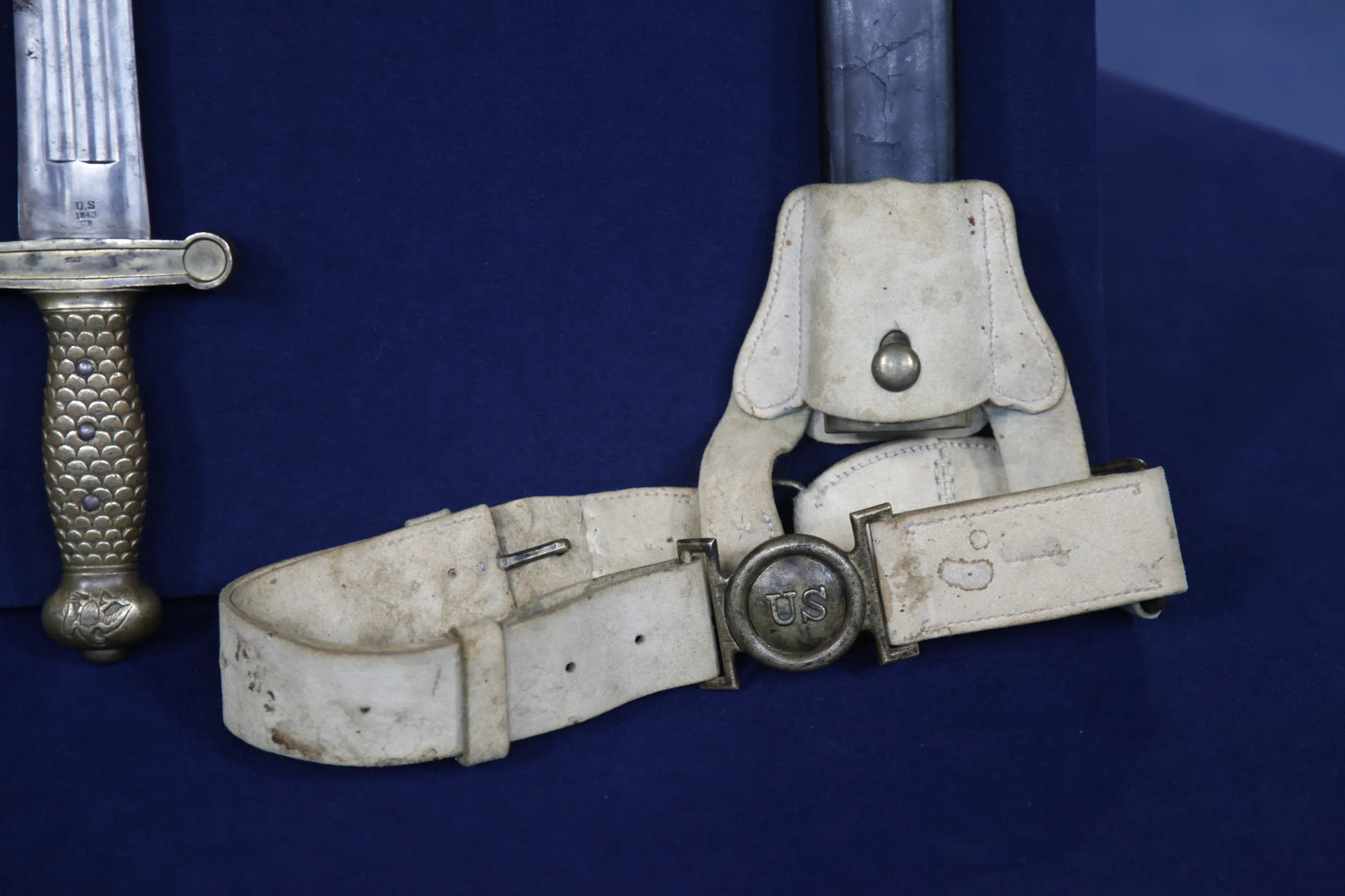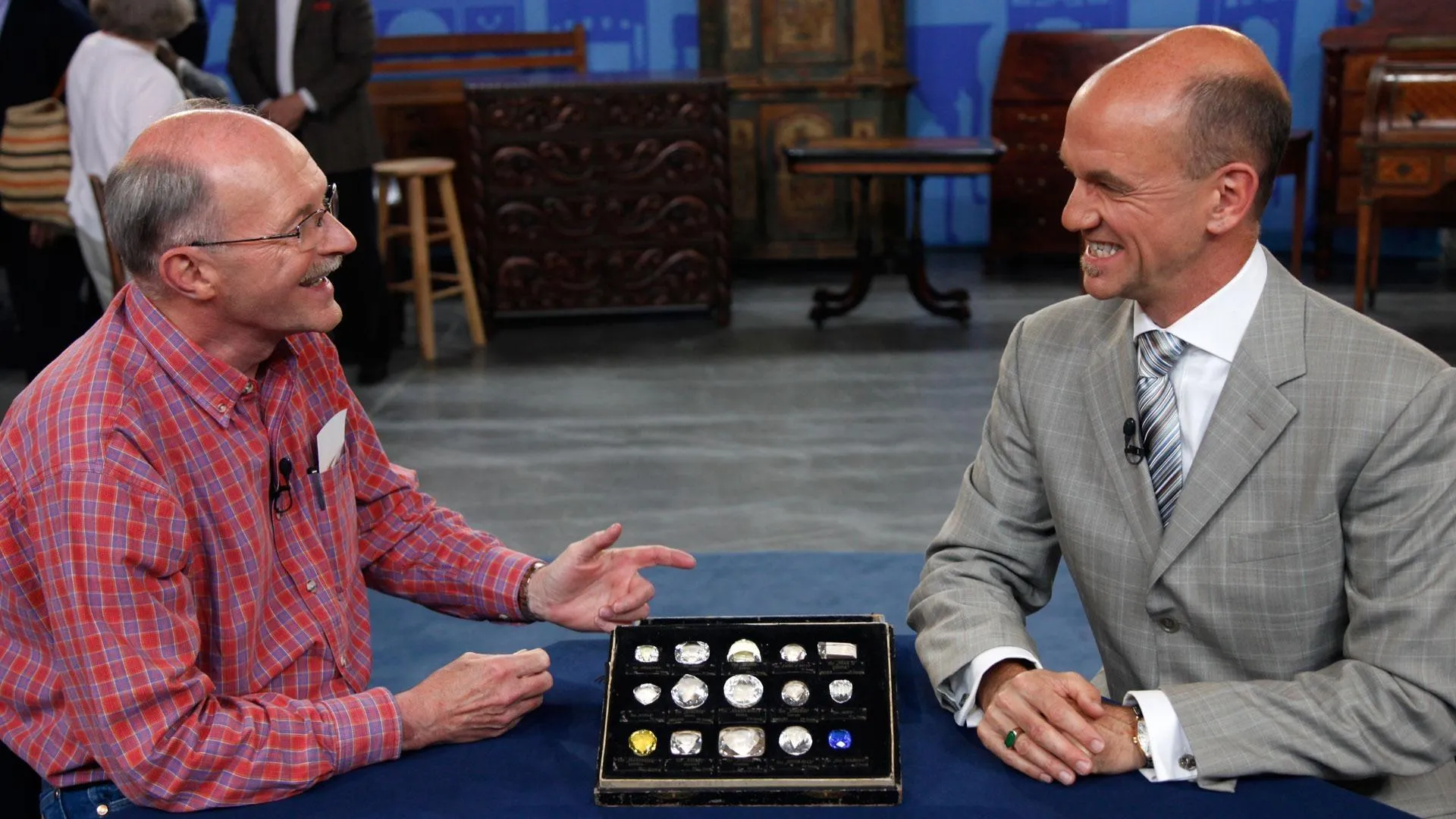GUEST: I brought in this sword that's been in the family for at least four generations now that belonged to, I think, my great-great-grandfather. He was in the Spanish-American War, and I think he lied about his age. I think he was 15 and he enlisted, and he was in Cuba. And so we have a lot of medals and some letters that he wrote and watercolors that he did when he was in Cuba. This sword's just kind of been with that collection passed down through the family ever since. So our assumption has just been that it was his sword because there's photos of him on a horse in Cuba, so...
APPRAISER: So he was a cavalryman?
GUEST: I believe so, yeah.
APPRAISER: Well, these are the standard markings for this style sword, and it's a model 1832 short artillery. And it was made in 1843. The initials that are beside the 1843 production date are "J.C.B." And that's for Joseph C. Bragg, who was an inspector for the U.S. government from 1841 to 1849. And he's the guy that said this is worthy to be used by the U.S. government.
APPRAISER: They'd inspect every sword?
GUEST: They did, and it had to pass muster. And a lot of time if they didn't, they went to state contracts, smaller contracts, or were sold privately. That one is for William A. Thornton. And they would inspect the handles and the blades, and it was done at different times. On the back side of the blade, we have the mark of Nathan P. Ames. It's marked "N.P. Ames, Springfield"-- meaning Springfield, Massachusetts. And they were one of the premier sword makers during the 1800s. There are several research places where you can go and see the actual production date of this sword because Ames kept meticulous records. So they can tell you to within a hundred swords how many they made that year.
GUEST: Oh, wow, that's great.
APPRAISER: Do you know when the Spanish-American War was?
GUEST: I seem to recall 1882 or maybe '72.
APPRAISER: 1898 is when it started.
GUEST: 1898, oh, okay.
APPRAISER: So this sword was made 55 years before that. So it probably wasn't worn by him. And another thing that lets us know that, this is an artilleryman's saber. It's a short artillery saber. They actually manufactured this style on up until the 1860s. And then they realized if you're this close, you're too close.
GUEST: Yeah.
APPRAISER: The cool thing about this sword is that you not only have a beautiful sword that still has a nice age on it, beautiful cast brass handle, you have the scabbard and the belt. And did you notice that the scabbard is a completely different type leather than the belt ring?
GUEST: Sure.
APPRAISER: This is a black leather that's been tanned. This is an oil-treated leather.
GUEST: Okay.
APPRAISER: And it's called buff leather. And you don't see this a lot these days. And it's because the oil that they would use to treat it was often times whale oil. And if you mix it with certain solvents, it can spontaneously combust later on.
GUEST: Wow.
APPRAISER: So not a lot of people use the buff leather after the Civil War. You see it occasionally, but not a lot. And most of the time, when it dries out, it'll break very easily, just like that. And this one-- spectacular. It's beautiful. It's still pliable. And that's one thing, when we're out west, like here in Billings, the climate is just perfect for it. What do you think it's worth?
GUEST: I don't know. I was thinking, you know, $800 maybe. That was, like, a high guess just being optimistic.
APPRAISER: Well, you just bought the sword. Now let's talk about the sword with the scabbard and with the belt. On today's market, on a retail market, the sword, the scabbard and the belt would bring between $3,000 and $3,500.
GUEST: Wow, that's amazing. That's great.





